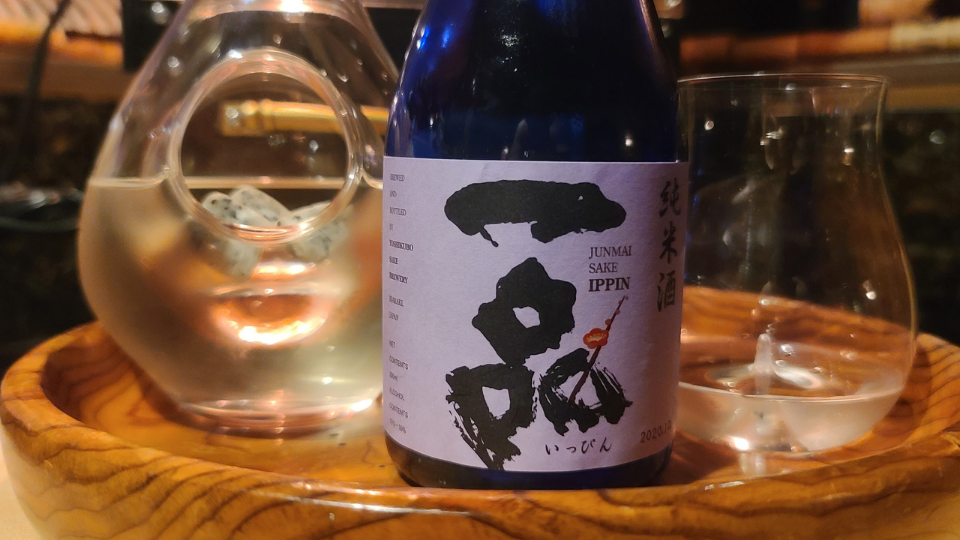A good question to ask is “ What exactly is sake?”. This is because categorizing this drink with a similar alcoholic beverage is impossible. We all know how some of these alcoholic beverages are being made: wine is fermented with grapes, beer is brewed with hops, and hard liquor is distilled.
There are many sites you can visit and each one of those will describe it differently.
Is it brewed, fermented, distilled, fortified, dry, sweet, sparkling? Hell, it can be made with all of those methods as well as made into a plethora of styles.
What is clear is that sake has its own category. For the record, the base ingredient for fermentation IS rice. It’s mind-boggling to know rice can encompass its own planet with over 40,000 strains at a brewer’s disposal. WOW-WEE!!! Now that’s how I describe the “SAKE KINGDOM”
First off let’s get the right pronunciation on the books: (pronounced SA-Keh, not SAH-kee). Sake is also correctly spelled sake.
Without a doubt, sake is the national alcoholic drink of Japan. However, when you visit Japan don’t ask “where do I get Sake?” because you will quickly be directed to the nearest liquor store.
In Japan, “Sake” is defined as an alcoholic drink of any kind. Most western people understand SAKE as the “RICE WINE”. In Japan, SAKE refers to ALL types of alcoholic beverages including Nihonshu (sake), Shochu (vodka-like), Umeshu (plum wine), (Shirataki) (Sparkling Nihonshu), and even whisky. Its proper name is “Nihonshu” and I will be citing it that way throughout.
It’s produced from any selection of over 40,000 strains of rice. The most popular being the native strain Yamada Nishiki. What did he have to do to be king of the army? Its alcohol content average is between 13-18% that will leave you pleasantly Smooth N’ Groove.
👹Did you know over 90% of the Nihonshu you will encounter is produced in the United States. Generally, what you will find on your local store shelf is brewed in California, Washington State. Nihonshu brewed in the USA is to the premium sake industry what Corona is to premium Mexican beer. Don’t be deceived!
👹Nihonshu can be and is made anywhere in the world, mostly the US and Australia. Although the same techniques to make them can be applied, I dare anyone to compare their Nihonshu to the ones that are made in Japan. It would just be wrong. Only superior examples hail from Japan. I do wish Japan would take a page from Champagne, Port, and Sherry bodies, who have laid laws to protect their names.
If “Sake” is stated on a label, it should solely be allowed to carry a Japan visa. You other countries, continue to craft Nihonshu all you want but, for respectability’s sake, come up with your own name! Have you heard of Japan?
Anyone with me? Let me know in the comments.
👹Nihonshu is not meant to be aged. The only Nihonshu that’s aged is called Koshu. If you open a bottle, drink up or share within a few days. It’s not because of oxidation, but because its fragile characteristics will soon be invisible to your senses. Be sure to store it in the refrigerator away from light and heat. Any unpasteurized Nihonshu must be kept refrigerated at all times unless you like bacteria.
👹This is confusing, to the consumer, on whether to enjoy your Nihonshu warm, room temperature or chilled. It’s simple, it depends on the style. For example, If you are having a graceful Daiginjo, warming it may delete any delicate aromas and complexities it contains. However, a meaty Junmai may open up with warming. I will be elaborating on the styles further down below.
👺In an age where everyone is esthetic conscience, I decided what the heck, why not include the calorie breakdown:
Small “ochoko” sake cup (1.5oz | 44ml) = 60 Calories
Small “tokkuri” sake carafe (5.0oz | 150ml) = 200 Calories
1 “go” serving (6.0oz | 180ml) = 240 Calories
“One Cup” peel-top sake cup (6.0oz | 180ml) = 240 Calories
300ml Sake Bottle (10.1oz | 300ml) = 404 Calories
Split for two serving (12.1oz | 360ml) = 484 Calories
720ml “Yongobin” Sake Bottle (24.3oz | 720ml) = 972 Calories
1.8L “Isshobin” Sake Bottle (60.8oz | 1.8L) = 2,432 Calories




